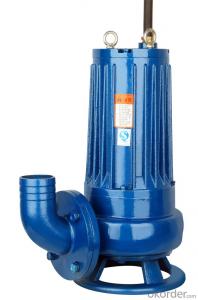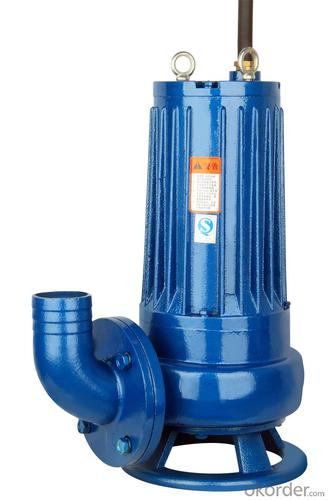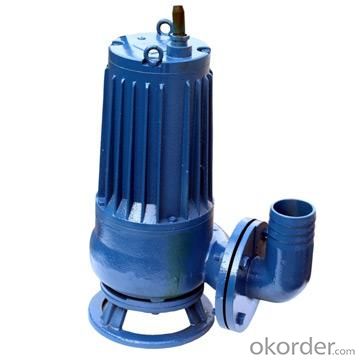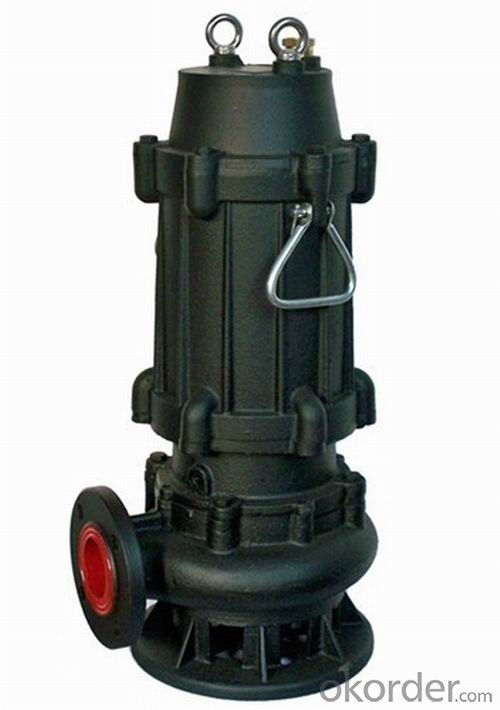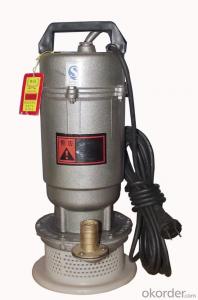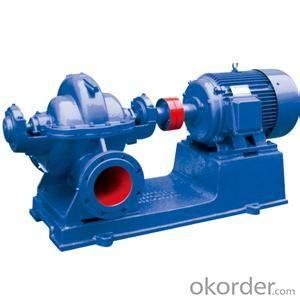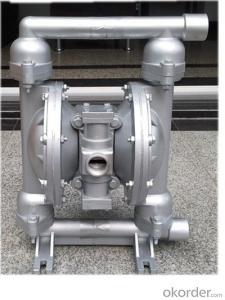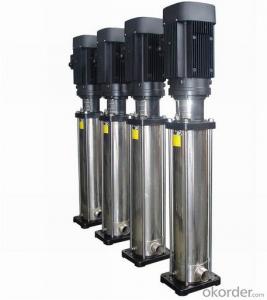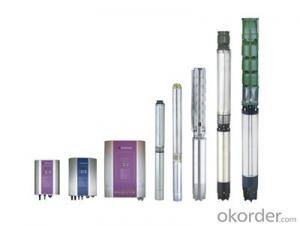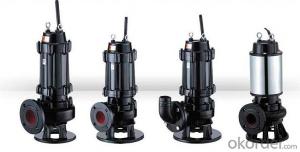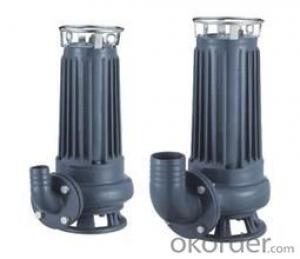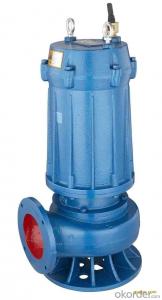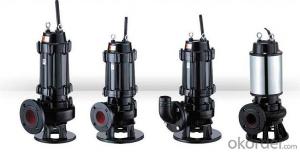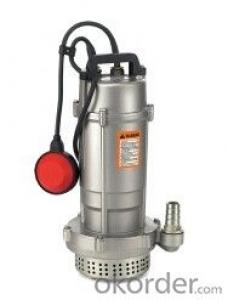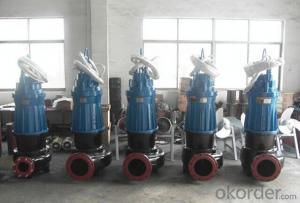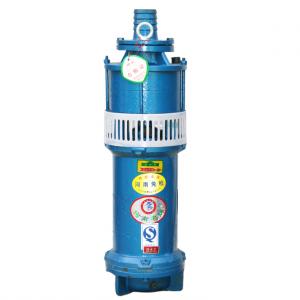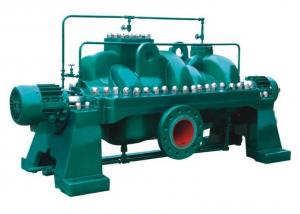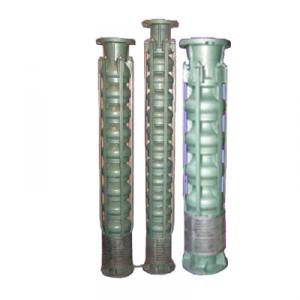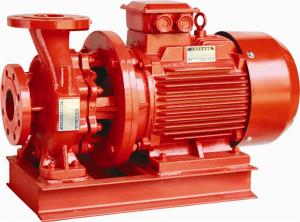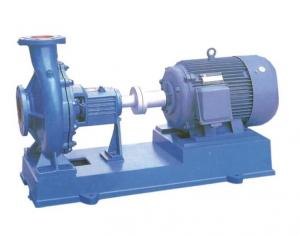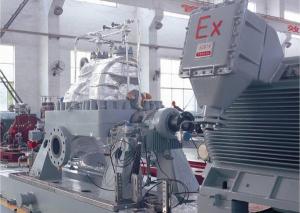JYWQ Auto Stirring Sewage Submersible Pump
- Loading Port:
- Shanghai
- Payment Terms:
- TT OR LC
- Min Order Qty:
- 1 unit
- Supply Capability:
- 200 unit/month
OKorder Service Pledge
OKorder Financial Service
You Might Also Like
Product Overview of JYWQ Auto Stirring Sewage Submersible Pump
JYQW series automtic stir sewage pump at work based on the type of automatic mixing device,
the device with rhe motor shaft ratation, resulting in strong mixing power, sewage tanks ups and downs of
sediment stirred into suspension material, inhalation pump discharge, aiming to halt the increase of the pump,
sewage capacity , one-time completion of the drainage, clean up, in addition of slit, to save operating costs,
is significantly advanced with the practicality of environmentally friendly products.
The main purpose of JYWQ Auto Stirring Sewage Submersible Pump
1.the factories, commercial heavily polluted waster water.
2.the urban sewafe treatment plants, hospitals, hotels and drainage system.
3.the residential sewage pumping station
4.the air defense system, pumping station, water plant's water supplu device.
5.municipal ebgineering, construction sites.
6.exporation, mining, power plants, supporting the attached machine.
rural biogas digesters, irrgation, dredging hetang.
Condition of use JYWQ Auto Stirring Sewage Submersible Pump
1.The medium temperature of not more than 60 ℃, medium weightis1-1.3kg/dm3, PH value 4-10 range.
2.1 Cr18Ni9Ti stianless steel suitable for a corrosive media.
Note: If the user specific media, temperature, etc., please specify whem ordering details of the
tranmission medium in order to provide more consistent with the use of the product.
FAQ
Q: Are your pumps cheaper than those of your competitors?
A: CNBM aims to give its customers the highest standards of quality and service and delivery times, all at a reasonable price.
Q: Do you have self-priming pumps?
A: Yes, our product portfolio also includes two ranges of self-priming pumps: self-priming electric pumps and self-priming side channel pumps.
Q: Is it really necessary to fit a bleed valve for the boxes?
A: It is always best to have a bleed valve as the gas produced by the fermenting sewage is potentially hazardous.
Q: If I increase the power of the motor, must I also increase the power of the inverter?
A: You must select the size of converter that allows maximum absorption of the electric motor.
Q: Do you have pumps with grinders?
A: Yes, the WQ models.
Q: How long is your warranty?
A: Unless otherwise expressly authorized in writing, by specifying a longer period or different conditions, CNBM states that, for a period of twelve (12) months from delivery date, all Products supplied are free from defects in materials and workmanship, and conform to the applicable specifications. Either the delivery documentation or the invoice must be provided to prove delivery date. In absence of such documents, the production date appearing on the product label may suffice.
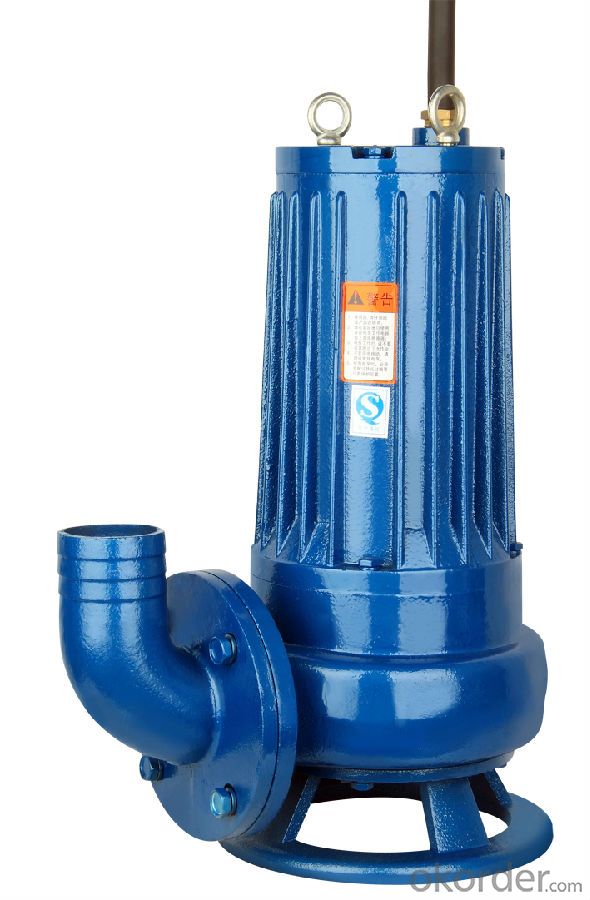
- Q: I'm not familiar w/ this model but need to swap out the water pump. I have no pictures or publications. Anything in particular to watch out for? Is this a pushrod engine w/ a water pump mounted in the front center of the engine and driven by a serpentine belt? Thanks in advance.
- You probably have the 3.1 v-6, so the pump is not really hard to change, and is a belt driven pump.
- Q: What's the meaning of a single-stage pump?
- In fact, the simplest difference between multi-stage pumps and single-stage pumps is that more than one impeller and one impeller can be summarized.The so-called single-stage pump is the pump inside only one impeller pump, so that we can be referred to as a single-stage pump, which is characterized by the head is not high, but the flow rate could reach thousands of square per hour, the typical model is the ISG type single-stage centrifugal pump.The pump is a pump body which contains a plurality of impeller pumps, pump is characteristic of such a large flow and high lift, traffic can be thousands of square kilometers to the head, but the cost is not low, customers should be chosen according to the actual parameters.
- Q: What is the 10KV pump unit?
- 10KV should refer to the motor start voltage value, ultra high voltage start, the general pump more than 160KW of the motor, the voltage used in 6KV, you motor should be more than 300KW
- Q: My car overheats in hot temperatures I have try everything except replacing the water pump and radiator how can I tell when its time to change each one and is it a do-it-yourself job
- Boomer is right in what to check first. but in this order. Check that the fan is working properly. Check that the radiator is clean and not clogged. Replace the thermostat. Replace the Water pump. Depending on the car/truck, is what dictates how hard it is to do. On older cars (a chevy 350) It takes 15 minutes for a novice to replace, On newer cars it varies greatly, as some are behind the timing belt and all other accesories,(plymouth breeze takes about 15hours for a novice) and some are just as easy as older cars.
- Q: The garage told me my water pump was pumping quot;weaklyand needs to be replaced.
- Yes you can have a weak pump. They wear out after awhile. but before replacing the pump, make sure that you don't have any blockage in you hoses. A partially blocked hose can make it appear like your pump is not working well and cleaning a hose out is a lot cheaper then replacing the pump.
- Q: Hello,I have a Kia Spectra, 4 doors, automatic, 1.8, 2002, 64000 miles, and the alternator belt just broke. It seems that there is a chance that the water pump was lost on the process.I looked on line and to buy from the dealership, these pieces together would cost me around $70.What would it be a fair price for the service? (thinking that I was unlucky enough to lose the water pump?How do I know if my water pump is good and they are only changing it to make me spend more money???I am a girl (foreign student), and don't understand of car, or know any repair shop that could take care of that...Thanks!!!
- You have either a bad belt tensioner or a bad bearing in the alternator. But my guess is the tensioner due to the fact the belt was placed on the alternator and the 1st mechanic made no mention of a bad bearing in the alternator. With the belts off right now, just open the hood and spin both the tensioner and the alternator. They should both spin freely with no resistance. If you find resistance, then you found the part that is breaking the belts. good luck....
- Q: I know what is the role of the pressurized water pump adapter to the indoor fire pipe through the fire, then the fire truck to the indoor water supply when the water is pressurized by municipal pipelines, natural water, fire water or water itself injection pump adapter? The fire truck is equivalent to a pump from the water extraction and then injected into the water pump adapter? I haven't seen it with my own eyes, so ask, I hope someone will answerIs the fire engine to be used as a pump? For example, in the field of water from fire pool or when municipal water supply network, a head of extraction, the other end of the water pump adapter access outdoor indoor pressure? PS: I'm not referring to the high-pressure water pump adapter, but access.
- Fire engines have their own hoses. I've seen them. They usually have hydrants. They take water from them. If they don't work, they have their own water
- Q: i have a significant stream of water running out of the coolant return side of the engine under the coolant pipe on a 1997 caravan i will lose a gallon and then it stops until the engine heats up and of course more comes out with expansion
- 1st off, without proper diagnostics you cannot get a proper repair...with that being said... 2nd, I would definately say you have a water pump problem, but all is not lost. Keep 2-3 gallons of water in the back and you'll be fine, 3rd, take it to a repair shop that has the experience necessary to repair your problem. the 3.0 v6's are not easy to work on. To replace the water pump you almost need to take the engine out( at least that would be easier) along with the r/f tire. Best way is to put the vehicle on a lift. My advice...take to a shop. Good luck and hope this helps
- Q: I would like to know some details about water pumping (ie. coca cola pumping water out of india) i just wanted to know some sort of prosedure like do they dig a hole and pump or what? I can't find any useful other information when i search it all that it says is that they quot;pumped waterbut nothing more. Thank you =)
- Usually they look for an underwater spring or reservoir, then they drill or dig into it. From there, they either instal a pump or use it as a well. As for how it works, refer to water pressure.
- Q: For a basement water pump that controls the toilet, shower and sink--- does it always have to stay plugged in and running??? I heard it make a weird noise and shut it off immediately.. Any help appreciated!!!
- Most of the time when you use water a large amount the pump will come but should shut off after a reasonable amount of time. When the set pressure is achieved it will shut off. And when the pressure drops it will turn on and the pressure will drop when using water.
Send your message to us
JYWQ Auto Stirring Sewage Submersible Pump
- Loading Port:
- Shanghai
- Payment Terms:
- TT OR LC
- Min Order Qty:
- 1 unit
- Supply Capability:
- 200 unit/month
OKorder Service Pledge
OKorder Financial Service
Similar products
Hot products
Hot Searches
Related keywords
